I. Description
For online video learning, please see: parent-child cell settings.
1. Version
| Report server version |
|---|
| 10.0 |
2. Function introduction
This chapter will describe grouped reports in detail. Grouped report is the most common and common report type among all reports, and it is also a report format supported by all reporting tools. In general terms, grouped reports are only vertical groups. The traditional way of making grouped reports is to divide the report into strips, and the user can specify groups according to a data binding wizard, summarize fields, and generate standard grouped reports.
There are some irregular grouped reports in Chinese-style complex reports. The logical relationship of the reports is very complex. There are many layers in the actual report drawing process, as shown in the following figure:

II. Example
1. Data preparation
Create a new data set DS1, write the SQL query statement select * from sales_basic in the database query.

2. Report design
Write the table title information in A1 ~ C1 cells,
Drag the fields in the dataset into the corresponding cells, select A2 ~ C2 cells, center the font, and select A1 ~ C2 cells to add a predefined style of sky blue inner and outer boxes to the whole table.

Select C2 cell and select cell element > basic on the right property panel. Select summary > sum from the data settings drop-down box.

3. Parent child cell setting
Select cells B2-C2, select cell attributes > expand in the right property panel, and set the left parent cell as the default.

4. Effect preview
1) PC
Save the report and preview the report in pagination, as shown in Section I.2 below.
2) Mobile
The App has the same effect as the HTML5 side, as shown in the following figure:

5. Template download
For completed templates, please refer to: %fr_HOME%\webapps\webroot\WEB-INF\reportlets\doc-EN\ReportDesign\Group.cpt
Click to download the template:
III. Grouping example index
| Subsection | Brief introduction | Effect preview |
|---|---|---|
| Cross Report | The feature of the cross report is that the header is composed of the upper header and the left header. From a formal point of view, it is somewhat similar to a two-dimensional sequence in mathematics, and the data is classified according to rows and columns. |  |
| Vertically grouped report | A common style in grouped reports is that the group heading (group header) is not on the left, but above or below. |  |
| Group summary | Quantitative summarization of data within a group in a grouped report. |  |
| Adjacent consecutive groups | According to the time sequence, if a field is consecutively the same, it will be displayed in combination | |
| Group by segment | The grouping is divided according to the value segment of the data, and the records belonging to a certain value range are grouped into a group for display |  |
| Merge grouping | When reporting, use some values as the main viewing object, while other values are summarized in the "Other" group |  |
| Custom formula grouping | General data is grouped by a certain field, such as a date field, each date corresponds to a group. At this time, the grouping is too detailed, and it is hoped to be grouped by year and week. |  |
| Dynamically display the top N groups | In the case of ordinary grouping, the first N groups are dynamically displayed, and the following groups are merged into other groups. |  |
| Dynamically group by segment length | The realization data is dynamically grouped according to different segment length parameters. |  |







